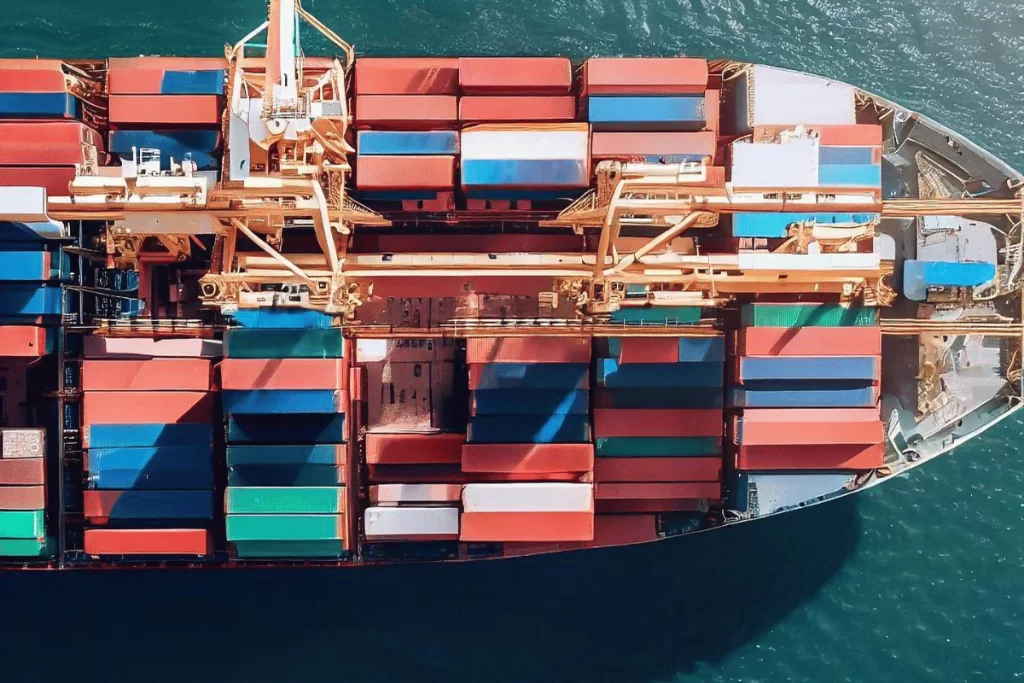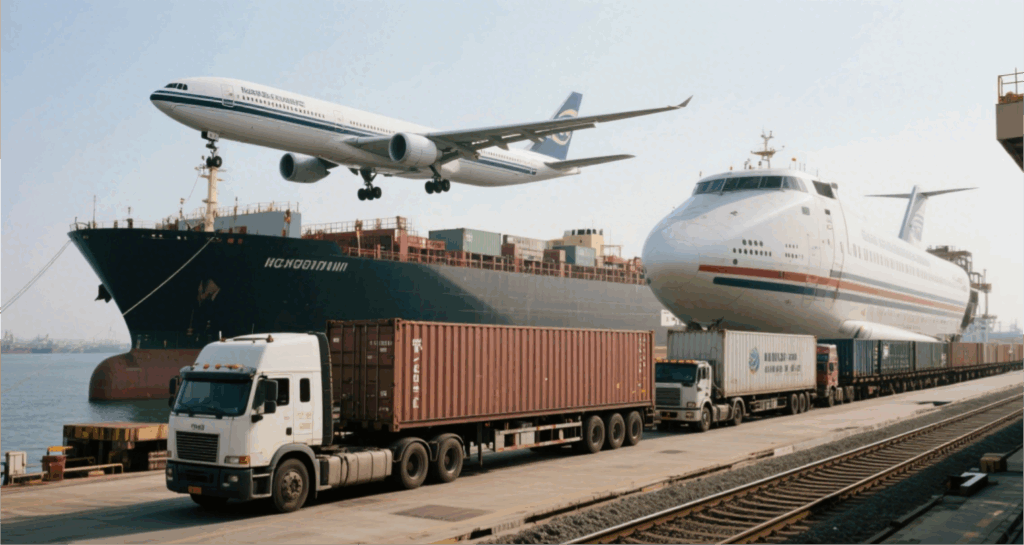- By Della tj
- September 29, 2025
- Sea Freight, Shipping
The China ocean freight increase has become a serious concern for global businesses. Rising shipping costs, longer transit times, and capacity shortages are affecting supply chains worldwide. Nevertheless, importers and exporters can take strategic actions to minimize disruptions and manage budgets more effectively.
What Is Driving the China Ocean Freight Increase?
Several interconnected factors are pushing freight rates higher:
- Global demand recovery: Strong demand for Chinese exports continues.
- Carrier capacity limits: Container shortages and port congestion reduce available slots.
- Fuel costs: Rising bunker fuel prices directly raise shipping expenses.
- Regulatory changes: Environmental rules increase compliance costs.
As a result, shippers are paying more for sea transport than at any time in the past decade.
How Do Container Prices Reflect This Increase?
| Container Type | 2022 Average Rate | 2023 Average Rate | 2024 Current Rate | Change |
|---|---|---|---|---|
| 20GP | $1,200 | $1,600 | $2,150 | +34% |
| 40GP | $1,800 | $2,350 | $3,200 | +36% |
| 40HQ | $1,950 | $2,500 | $3,450 | +38% |
These figures illustrate the significant rise in containerized freight rates, particularly for long-haul routes to Europe and North America.
Why Does Port Congestion Worsen the Situation?
Port congestion in Shanghai, Ningbo, and Shenzhen delays vessel turnaround times. Consequently, fewer ships are available, which reduces capacity. Additionally, trucking shortages around Chinese ports contribute to slower container movement, worsening the imbalance between supply and demand.

How Do Transit Times Compare Across Routes?
| Route | Average Transit Time (Before Increase) | Current Transit Time |
|---|---|---|
| Shanghai → Los Angeles | 18–20 days | 22–26 days |
| Ningbo → Hamburg | 28–30 days | 32–36 days |
| Shenzhen → Sydney | 12–14 days | 15–18 days |
Although delays vary by destination, the overall trend shows longer delivery schedules for importers worldwide.
What Alternatives Exist to Manage Rising Costs?
Shippers are exploring other modes:
- Air freight: Faster but far more expensive.
- Rail freight: Balanced option for shipments to Europe.
- Multimodal solutions: Combining sea with rail or air for flexibility.
Pros and Cons of Alternatives
| Mode | Cost | Speed | Best For |
|---|---|---|---|
| Air Freight | Very high | Fastest | Urgent or high-value goods |
| Rail Freight | Moderate | Medium | Europe-bound cargo |
| Multimodal | Variable | Flexible | Diversified supply chains |

Real Case Studies of the China Ocean Freight Increase
Case 1: Shenzhen to Los Angeles (Consumer Electronics, 40HQ FCL)
- Cargo: 26 tons of laptops
- Mode: FCL sea freight
- Cost: $3,400 (previously $2,200)
- Transit time: 25 days
- Remark: Increased freight rates raised total import costs by 15%
Case 2: Ningbo to Rotterdam (Home Appliances, 2×40GP FCL)
- Cargo: 40 tons washing machines
- Mode: Sea freight, two containers
- Cost: $6,400 total (up from $4,500)
- Transit time: 34 days
- Remark: Retailer adjusted pricing strategy to offset higher freight
How Do Customs and Documentation Affect Costs?
Beyond freight rates, customs procedures add expenses. Missing paperwork often causes costly delays. Typical requirements include:
| Document | Purpose |
|---|---|
| Bill of Lading | Proof of shipment contract |
| Commercial Invoice | Declares product value |
| Packing List | Detailed cargo breakdown |
| Certificate of Origin | Confirms country of manufacture |
| Import License | Needed for restricted goods |
By ensuring accuracy, shippers can avoid additional surcharges linked to the China ocean freight increase.
Should Companies Use Freight Forwarders?
Yes. Professional forwarders secure better carrier rates, manage customs clearance, and recommend alternative transport routes. Moreover, they provide visibility tools to track shipments, which reduces uncertainty during rate hikes. On the other hand, working alone leaves importers vulnerable to fluctuating costs.
How Does the Freight Increase Impact Supply Chains?
- Higher landed costs: Increased freight raises product prices.
- Inventory pressure: Longer lead times require larger safety stocks.
- Cash flow strain: SMEs face difficulties paying higher freight charges.
- Shift in sourcing: Some buyers diversify to Southeast Asia suppliers.
To illustrate, many companies are redesigning supply chains to withstand future volatility.
Can Importers Negotiate Better Rates?
While base market prices are high, strategies can help:
- Book early to avoid peak season surcharges.
- Consolidate cargo to lower per-unit costs.
- Leverage forwarders with strong carrier contracts.
- Choose off-peak ports like Qingdao instead of Shanghai.
These tactics allow businesses to maintain cost control despite rising ocean freight rates.
Conclusion
The China ocean freight increase is reshaping global logistics, driving up costs and altering supply chain strategies. Although higher rates create challenges, importers can adapt by diversifying transport modes, consolidating shipments, and working with reliable freight forwarders. Ultimately, those who manage documentation accurately, book early, and leverage industry expertise will navigate this volatile environment successfully. By planning ahead, businesses can reduce the impact of the China ocean freight increase and protect their long-term competitiveness.
- Consult TJ China Freight Forwarding for the lowest quote. They will provide you with reliable, cost-effective service.
FAQ:
Q1.What is causing the China ocean freight increase in 2025?
High global demand, container shortages, fuel price hikes, and port congestion are the main reasons for increased freight rates.
Q2.How does the ocean freight increase affect small importers?
It raises landed costs, reduces profit margins, and forces smaller companies to consolidate shipments or seek alternative transport.
Q3.Can rail freight reduce the impact of rising sea freight?
Yes, China–Europe rail freight offers faster transit than sea and lower cost than air, balancing speed and expense.
Q4.Should importers switch from sea freight to air freight?
Air freight is faster but much more expensive; it is suitable only for urgent or high-value shipments.
Q5.How do shipping alliances influence freight rates?
Carrier alliances adjust capacity and routes, which directly affects available slots and contributes to freight price fluctuations.

